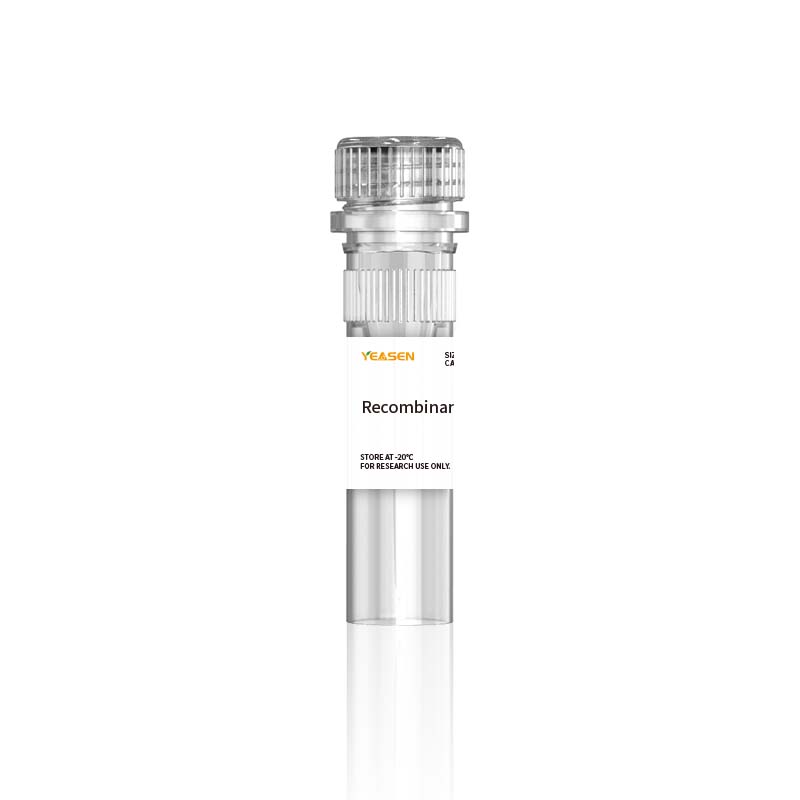Description
Carcinoembryonic antigen-related cell adhesion molecule 6 (CEACAM-6), previously called nonspecific crossreacting antigen (NCA) or CD66c, is one of seven human CEACAM family members within the immunoglobulin superfamily. In humans, CEACAMs include type I transmembrane proteins (CEACAM-1, -3, and -4) and GPI-linked molecules (CEACAM-5 through -8). There is no human CEACAM-2. Human CEACAM-6 is a 90 kDa, GPI-linked membrane protein that contains a 34 aa signal sequence, a 286 aa extracellular domain (ECD), and a 24 aa hydrophobic C-terminal propeptide. The GPI membrane anchor is attached at the C-terminus following cleavage of the propeptide. CEACAM-6 contains one N-terminal V-type Ig-like domain (N domain), followed by two C2-type Ig-like domains. It shows considerable glycosylation, including (sialyl) LewisX, which mediates binding to E-selectin, galectins and some bacterial fimbrae. Mature human CEACAM-6 shows 84%, 85%, 80%, 87% and 51% aa identity to the equivalent extracellular regions of human CEACAMs 1, 5 (CEA) and 8, rhesus CEACAM-2, and bovine CEACAM-6, respectively. CEACAM-6 is expressed by granulocytes and their precursors. Activation enhances surface expression by mobilizing CEACAM-6 from storage in azurophilic granules. It often shows aberrant expression in acute lymphocytic leukemias. CEACAM-6 is also expressed in epithelia of various organs and is upregulated in pancreatic and colon adenocarcinomas and hyperplastic polyps.
Specifications
|
Synonyms |
CEACAM6; CD66c; CEAL; NCA; CEA |
|
Uniprot No. |
|
|
Source |
Recombinant Human CEACAM-6/CD66c Protein is expressed from HEK293 Cells with His tag and Avi tag at the C-terminal. It contains Lys35-Gly320. |
|
Molecular Weight |
The protein has a predicted MW of 34.1 kDa. Due to glycosylation, the protein migrates to 55-75 kDa based on Tris-Bis PAGE result. |
|
Physical Appearance |
Sterile Filtered White lyophilized (freeze-dried) powder. |
|
Purity |
> 95% as determined by SDS-PAGE and HPLC |
|
Activity |
SPR Data:Human CEACAM-8, His Tag immobilized on CM5 Chip can bind Human CEACAM-6, His Tag with an affinity constant of 4.59 μM as determined in SPR assay (Biacore T200). |
|
Endotoxin |
< 1.0 EU per 1μg of the protein by the LAL method. |
|
Formulation |
Lyophilized from 0.22 μm filtered solution in PBS (pH 7.4). Normally 5% trehalose is added as protectant before lyophilization. |
|
Reconstitution |
Centrifuge tubes before opening. Reconstituting to a concentration more than 100 μg/mL is recommended (usually we use 1 mg/mL solution for lyophilization). Dissolve the lyophilized protein in distilled water. |
Storage
The product should be stored at -20~-80℃ for 1 year from date of receipt.
2-7 days, 2 ~8 °C under sterile conditions after reconstitution.
3-6 months, -20~-80℃ under sterile conditions after reconstitution.
Recommend to aliquot the protein into smaller quantities when first used and avoid repeated freeze-thaw cycles.
Note
1. Avoid repeated freezing and thawing.
2. Please operate with lab coats and disposable gloves, for your safety.
3. This product is for research use only.
Product Data
Tris-Bis PAGE
HB220624
Payment & Security
Your payment information is processed securely. We do not store credit card details nor have access to your credit card information.
Inquiry
You may also like
FAQ
The product is for research purposes only and is not intended for therapeutic or diagnostic use in humans or animals. Products and content are protected by patents, trademarks, and copyrights owned by Yeasen Biotechnology. Trademark symbols indicate the country of origin, not necessarily registration in all regions.
Certain applications may require additional third-party intellectual property rights.
Yeasen is dedicated to ethical science, believing our research should address critical questions while ensuring safety and ethical standards.

